The State Historical Society accepts about one hundred donations per year into our museum collection. Each donation can consist of one item up to several hundred items. We are stewards of the collection on behalf of the people of North Dakota, so we would like to hear from you. What do you think we should have in our collection? What sorts of objects define North Dakota? Your input matters for our future collecting. Click here to fill out our survey: bit.ly/proactivecollecting.
We will use the public responses to better guide our collecting strategy for the future. We will also use the data to determine how much additional storage space we will need to continue collecting the history of North Dakota.
We collect a myriad of different objects from all time periods. Our museum collections committee always looks for a story behind the objects, for that is what sets one object apart from another. Here are a few collections that recently arrived at the North Dakota Heritage Center & State Museum.
The Office of the Secretary of State donated voting machines that were being replaced by newer models. The M100 and AutoMARK were purchased using federal, state, and county funds following the passage of the Help America Vote Act (HAVA). HAVA was passed following the hanging chad fiasco in Florida during the 2000 General Election and was meant to modernize our nations voting systems. Ninety-five percent of the purchase was paid for with federal funds, 2.5% with state funds, and 2.5% with county funds.
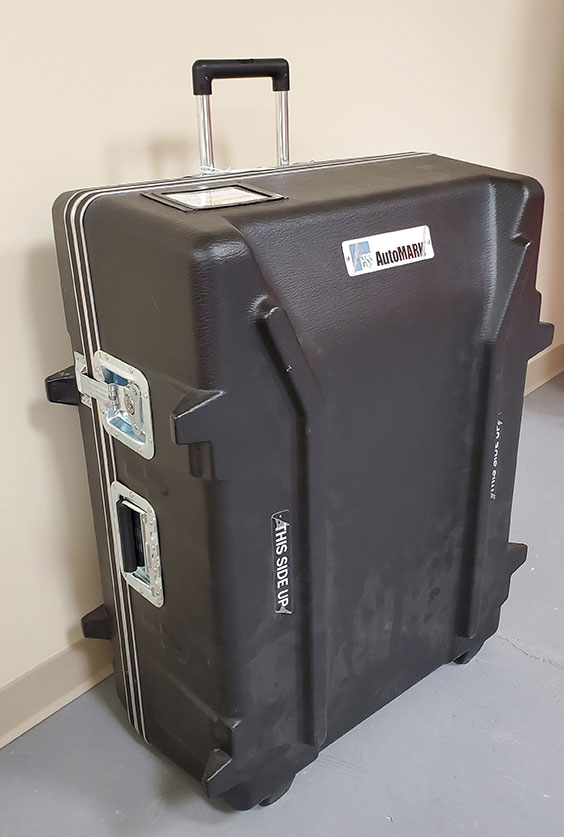
AutoMARK assistive ballot marking device. Acc #2019.00058
The M-100 was implemented in approximately half of the counties in 2004. M-100 implementation was completed in all 53 counties for the 2006 election. AutoMARK implementation was completed during the 2006 election. The M-100 and AutoMARK were available at every polling place in the state for every statewide election through the 2018 General Election. Counties also used this equipment for local special elections.
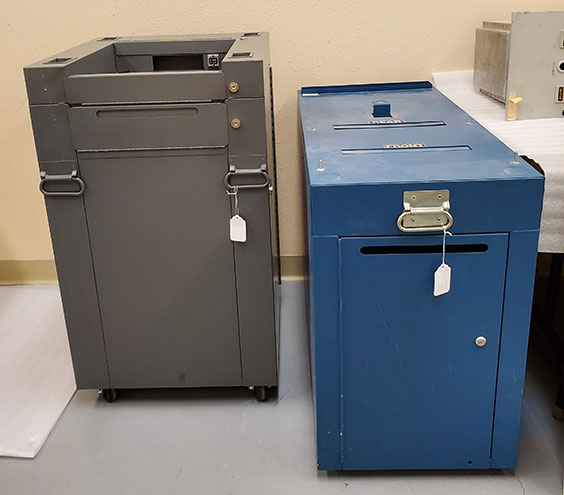
Ballot boxes for the M-100 optical scan and Optech III-P Eagle. Acc #2019.00058
The Optech III-P Eagle (the tan machine below) was used in several counties prior to the adoption of the statewide voting system. This particular machine comes from LaMoure County.
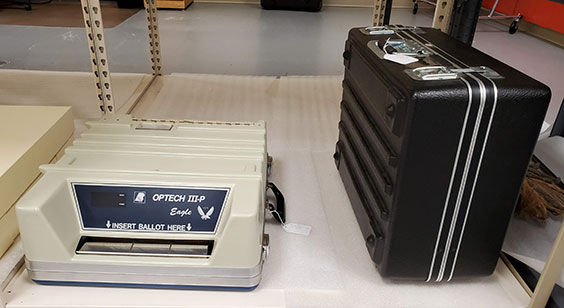
The Optech III-P Eagle ballot tabulator. Acc #2019.00058
The soccer uniform was worn by four-year-old Hannah while playing on the pre-K team Orange Pumpkins in the fall of 2018. Although she and her parents live in Bismarck, Hannah had a friend who played soccer in Mandan, so Hannah’s parents signed her up for Mandan’s recreational soccer team.
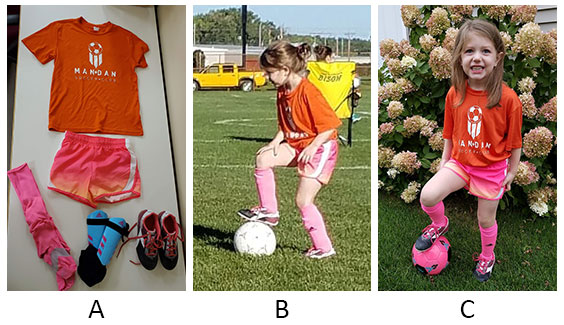
A: The uniform consists of the orange Mandan soccer team shirt, a pair of athletic shorts, shin guards, pink soccer socks, and soccer cleats. Acc # 2019.00066; B: Hannah playing a game at the Dakota Community Bank and Trust soccer fields in Mandan, ND.; C: Hannah posing for a photo in her uniform.
Harvey Jaeger donated a wool sweater made by his grandmother, Anna Jaeger, for his father, Hugo Jaeger. It was made by Anna in about 1930. Anna raised the sheep, sheered the wool, spun and dyed the yarn, and knit the sweater.
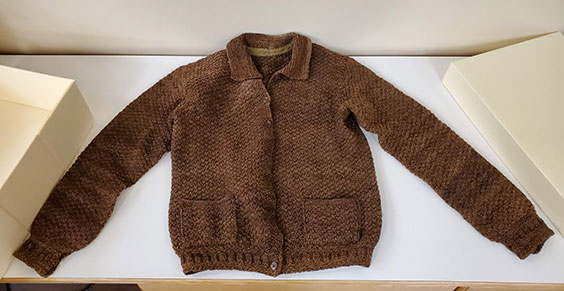
The sweater is a brown wool, button down cardigan, with multiple knit patterns. Acc #2019.00054
Anna (Birkmeier) Jaeger was born in Germany, August 15, 1882, and emigrated to the United States in 1885, settling south of Hebron. She married Fred Jaeger in 1901 and homesteaded south of Zap. Hugo Jaeger was third oldest of 11 siblings, Anna died in 1968.
Hugo Jaeger (1904-1946) married Pauline Jacober (1908-2013) in 1929 and lived in a three- room house on the family farm for nine years. Then they moved to Zap where Hugo worked in the coal mine. They moved to Bismarck in 1942.
***Due to the temporary closing of our sites for COVID-19 precautions, we currently will not be accepting the donation items until further notice. If you have something you would like to donate, please still fill out our potential acquisition questionnaire, which can be found at https://www.history.nd.gov/data/padq_emailform.html. This is the first step to start to make a donation. We will continue to respond to your requests to make donations.

